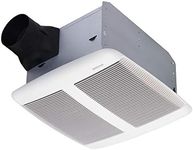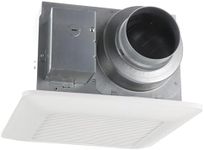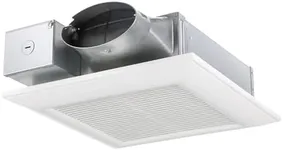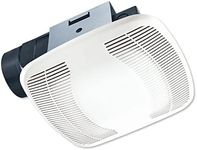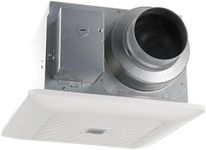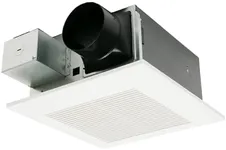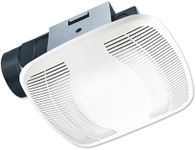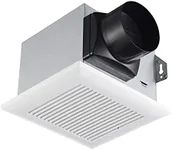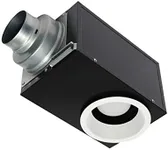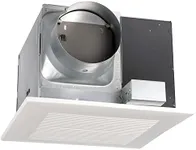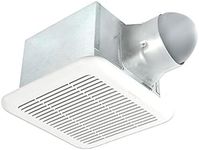Buying Guide for the Best Quiet Bathroom Fans
Choosing a quiet bathroom fan is all about balancing effective ventilation with minimal noise. A good bathroom fan helps remove moisture and odors, preventing mold and keeping your bathroom fresh. When shopping, focus on the features that impact both performance and comfort, so you end up with a fan that suits your bathroom size and your sensitivity to noise.Noise Level (Sones)Noise level in bathroom fans is measured in sones, which tells you how loud the fan will be when running. A lower sone rating means a quieter fan. Fans typically range from less than 1 sone (very quiet, almost like a whisper) to 4 sones or more (noticeably loud). If you want a peaceful bathroom experience, look for fans rated at 1.5 sones or lower. If noise isn't a big concern, higher sone ratings may be acceptable. Think about when and how often you'll use the fan—if you use the bathroom at night or want a spa-like atmosphere, quieter is better.
Airflow Capacity (CFM)Airflow capacity is measured in cubic feet per minute (CFM) and tells you how much air the fan can move. This is important because it determines how effectively the fan can remove moisture and odors. Small bathrooms (under 50 square feet) usually need a fan with 50 CFM, while larger bathrooms may require 80 CFM or more. To pick the right CFM, measure your bathroom and match it to the fan's rating. If your bathroom has a shower or tub, or if it tends to get steamy, consider a slightly higher CFM for better performance.
Energy EfficiencyEnergy efficiency refers to how much electricity the fan uses to do its job. More efficient fans use less power, which is better for the environment and can save you money on your energy bills. Look for fans with energy certifications or those labeled as energy-saving. If you plan to run your fan often or leave it on for long periods, choosing an efficient model is especially important.
Installation TypeBathroom fans can be installed in different ways: ceiling-mounted, wall-mounted, or even in-line (installed in the ductwork). The right type depends on your bathroom's layout and existing venting. Ceiling fans are most common, but wall-mounted fans are useful if ceiling access is limited. In-line fans are great for very quiet operation or for venting multiple bathrooms. Consider your bathroom's structure and how much work you're willing to do for installation when choosing.
Additional FeaturesSome bathroom fans come with extra features like built-in lights, humidity sensors, or timers. Lights can save space and add convenience, while humidity sensors automatically turn the fan on or off based on moisture levels, which is great for preventing mold. Timers let you set the fan to run for a certain period after you leave the bathroom. Think about which features would make your daily routine easier or more comfortable, and choose a fan that offers those.
